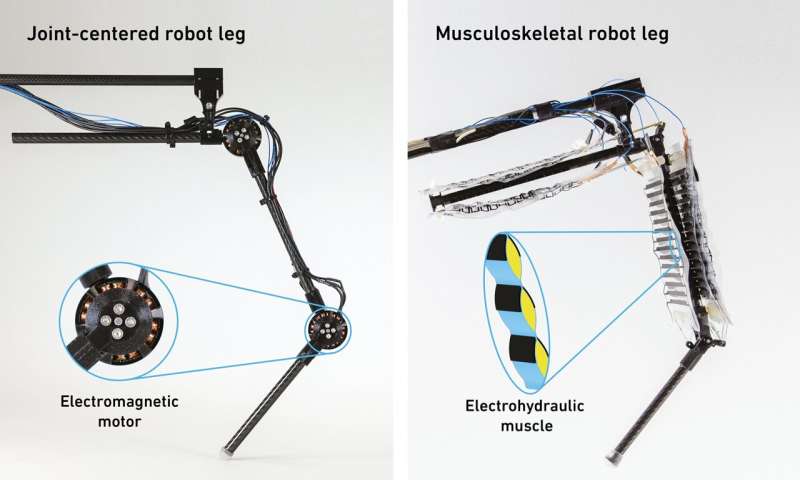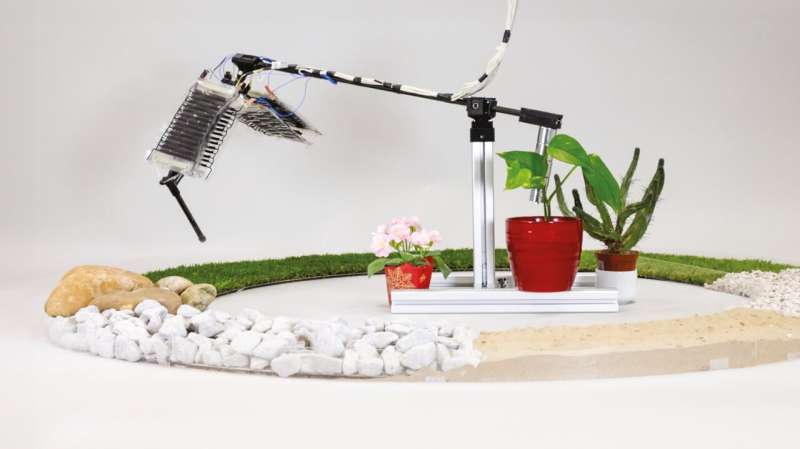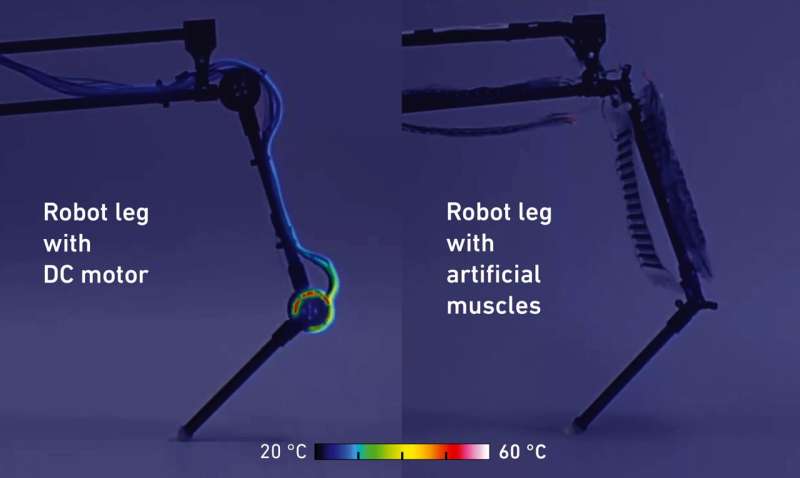
Researchers said on Monday they had designed the first robotic leg with “artificial muscles”—oil-filled bags allowing machines to move more like humans—that can jump nimbly across a range of surfaces.
The small, disembodied robot leg was shown hopping over grass, sand and rocks in a video released alongside a new study in Nature Communications.
The researchers hope the technology can be used in the future to create humanoid robots to help out with “boring labor” around the house, study co-author Robert Katzschmann told AFP.
Conventional humanoid robots are built with motors and rigid metal joints similar to those used on factory construction lines, the robotics professor at Switzerland’s ETH Zurich university explained.
As well as being extremely expensive, such hulking robots could be dangerous if they were to enter people’s homes.
If one was to “fall on you, it is going to be quite painful”, Katzschmann said.
A future robot helper needs to be able to not just carry heavy things but “also give someone a hug or shake hands”, he added.
The Swiss-led team of researchers was inspired by the 600 muscles in the human body to create something that can walk and jump in a more fluid, agile manner.
To do this, they used “artificial muscles”, also known as electrohydraulic actuators.
These soft actuators, which resemble freezer bags, are filled with oil and have electrodes attached.
The way the liquid contracts and expands allows the technology to more closely mimic animal muscles.
The electrostatic system also means that when the robot knee is in a bent position, such as a person would have when squatting, the system uses less electricity than traditional motors, the study said.

The leg can handle rough terrain more nimbly than its rigid predecessors, according to the researchers.
It was able to jump nearly 13 centimeters (five inches), which is 40 percent of its height, the study said.
Research into electrohydraulic actuators is relatively new, with the field only emerging around six years ago.
The simplistic leg cannot currently move freely, only jumping in circles, the researchers acknowledged.

So any robots using such artificial muscles are still some way off.
But the components to make these artificial muscles are not expensive, Katzschmann said, adding that he hoped mass production could speed advancements in the years ahead.
More information:
Electrohydraulic musculoskeletal robotic leg for agile, adaptive, yet energy-efficient locomotion, Nature Communications (2024). DOI: 10.1038/s41467-024-51568-3
© 2024 AFP
Citation:
First robot leg with ‘artificial muscles’ jumps nimbly: Study (2024, September 9)
retrieved 9 September 2024
from https://phys.org/news/2024-09-robot-leg-artificial-muscles-nimbly.html
This document is subject to copyright. Apart from any fair dealing for the purpose of private study or research, no
part may be reproduced without the written permission. The content is provided for information purposes only.







